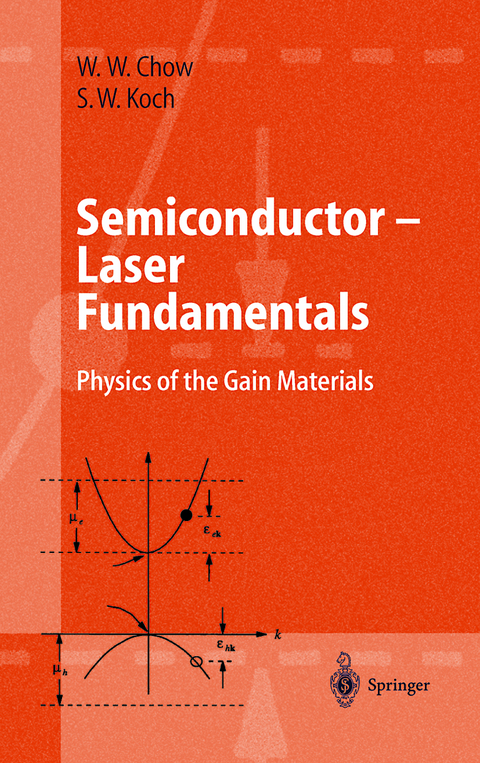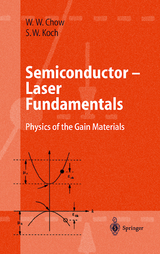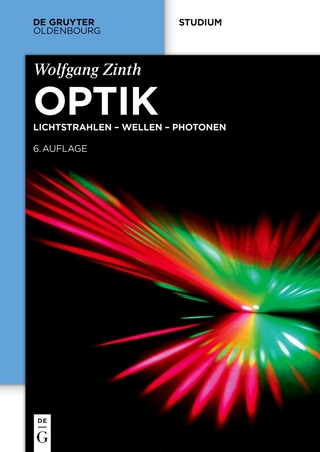Semiconductor-Laser Fundamentals
Springer Berlin (Verlag)
9783540641667 (ISBN)
Since Fall of 1993, when we completed the manuscript of our book "Semi conductor-Laser Physics" [W.W. Chow, S.W. Koch, and M. Sargent III (Springer, Berlin, Heidelberg, 1994)] many new and exciting developments have taken place in the world of semiconductor lasers. Novel laser and ampli fier structures were developed, and others, for example, the VCSEL (vertical cavity surface emitting laser) and monolithic MOPA (master oscillator power amplifier), made the transition from research and development to production. When investigating some of these systems, we discovered instances when de vice performance, and thus design depend critically on details of the gain medium properties, e.g., spectral shape and carrier density dependence of the gain and refractive index. New material systems were also introduced, with optical emission wave lengths spanning from the mid-infrared to the ultraviolet. Particularly note worthy are laser and light-emitting diodes based on the wide-bandgap group-III nitride and II~VI compounds. These devices emit in the visible to ultra-violet wavelength range, which is important for the wide variety of optoelectronic applications. While these novel semiconductor-laser materi als show many similarities with the more conventional near-infrared systems, they also possess rather different material parameter combinations. These dif ferences appear as band structure modifications and as increased importance of Coulomb effects, such that, e.g., excitonic signatures resulting from the at tractive electron-hole interaction are generally significantly more prominent in the wide bandgap systems.
Stephan W. Koch ist Physikprofessor an der Philipps-Universität Marburg und Adjunct Professor am Optical Sciences Center der Universität von Arizona, Tucson/USA. Nach seiner Promotion 1979 an der Goethe-Universität in Frankfurt arbeitete er als Gastwissenschaftler an dem IBM Research Laboratory in San Jose/USA und erhielt nach seiner Rückkehr und Habilitation in Frankfurt ein Heisenberg-Stipendiat der Deutschen Forschungsgemeinschaft. 1986 begann er seine Tätigkeit an der Universität von Arizona erst als Associate Professor und ab 1989 als Full Professor. 1993 folgte er einem Ruf auf eine Professur für Theoretische Physik nach Marburg. Seine Fachgebiete umfassen die Theorie der kondensierten Materie, optische und elektronische Eigenschaften von Halbleitern, Vielteilchen-Wechselwirkungen, Halbleiternanostrukturen, kohärente und ultraschnelle Phänomene, die Theorie von Halbleiter-Lasern, Mikroresonatoren und photonischen Kristallen sowie quantenoptische Effekte in Halbleitern. 1997 erhielt Stephan W. Koch den Leibniz Preis der Deutschen Forschungsgemeinschaft, 1999 den Max-Planck Forschungspreis der Humboldt Stiftung und Max-Planck Gesellschaft.
1. Basic Concepts.- 2. Free-Carrier Theory.- 3. Coulomb Effects.- 4. Correlation Effects.- 5. Bulk Band Structures.- 6. Quantum Wells.- 7. Applications.- References.
"This book presents an in-depth discussion of the semiconductor-laser gain medium...a wealth of examples for many different material combinations bestow the book with quantitative and predictive value for a wide variety of applications."
--Optik
| Erscheint lt. Verlag | 21.7.1999 |
|---|---|
| Zusatzinfo | X, 245 p. |
| Verlagsort | Berlin |
| Sprache | englisch |
| Maße | 155 x 235 mm |
| Gewicht | 496 g |
| Themenwelt | Naturwissenschaften ► Physik / Astronomie ► Optik |
| Technik ► Elektrotechnik / Energietechnik | |
| Schlagworte | Absorption • Complexity • electronic properties • Halbleiteroptoelektronik • Hardcover, Softcover / Physik, Astronomie/Elektrizität, Magnetismus, Optik • Hardcover, Softcover / Technik/Bautechnik, Umwelttechnik • HC/Physik, Astronomie/Elektrizität, Magnetismus, Optik • Laser • Refractive index • semiconductor |
| ISBN-13 | 9783540641667 / 9783540641667 |
| Zustand | Neuware |
| Informationen gemäß Produktsicherheitsverordnung (GPSR) | |
| Haben Sie eine Frage zum Produkt? |
aus dem Bereich




